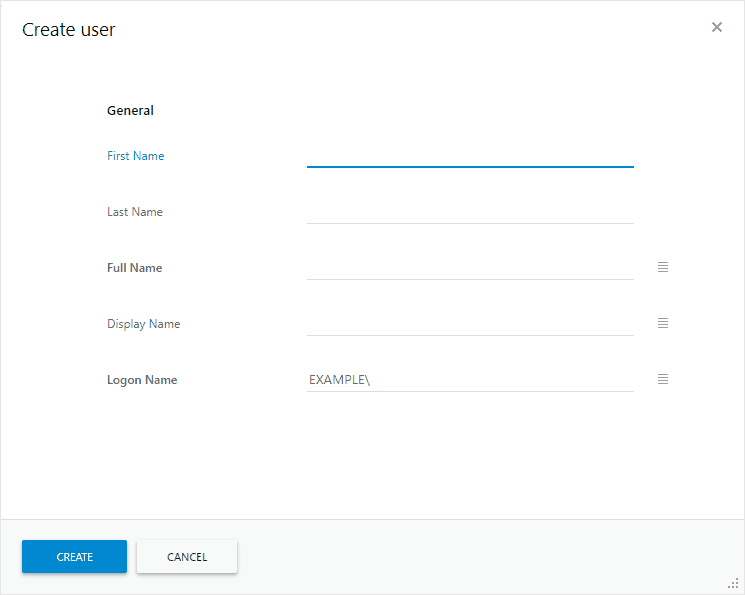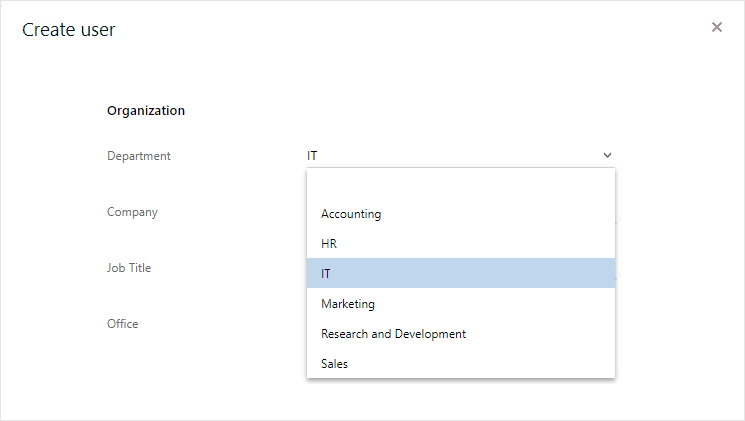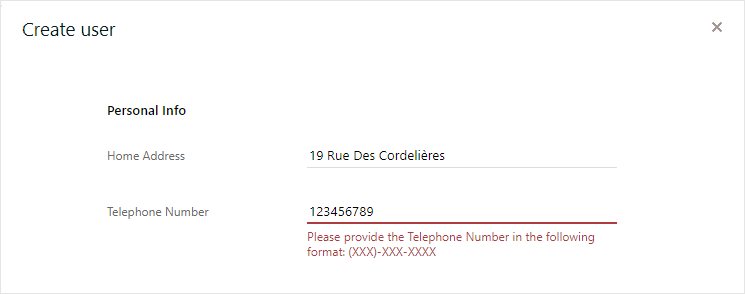Keeping all your data standardized is essential for efficient Active Directory management. Not only is it important for ease of use, but also for things like compliance and auditing. In Adaxes it’s done using a feature called Property Patterns, which allows you to enforce your company’s data standards and be sure that they’re always obeyed.
Generating Missing Values Using Templates
Property Patterns can be used to generate missing values based on already existing ones. This can be especially useful when provisioning new users. For example, you can get fields like ‘Display Name’, ‘Full Name’, ‘User Logon Name’, etc. all in different formats and all just from the ‘First Name’ and ‘Last Name’ fields.

This means that by manually putting in just the first name and last name all the other attributes are generated automatically, using the templates you define. This way you can be sure that everything will be put in and maintained correctly. No misprints or other mistakes will crawl into your company’s data.
If you have some scenarios that are specific to your environment, e.g. you have a custom scheme of managing non-unique usernames, you can always use PowerShell scripts that integrate natively into Adaxes workflows. Here’s an example of such script.
Validating User Input
You can also minimize the risk of human factor mistakes by specifying predefined values for certain properties. E.g. you can only allow the department property to be ‘IT’, ‘Sales’, ‘Marketing’ and ‘HR’. For everyone, who will be editing this field via Adaxes Web Interface, it will look like a drop-down list.

For the attributes that need to be entered manually, you can define regular expressions that can impose certain standards for the data input. This can be useful for things like phone numbers or employee IDs. To make it easier for the users you can also customize the tooltips. This way, you can leave the data input to the users, but still have control over what they enter.

You can also make certain fields compulsory. This means that you won’t have somebody just forgetting to put in their address or description. This can be particularly useful if these fields are then used in workflows. E.g. if you send the initial password to the user’s phone, you need to have the number, otherwise the whole thing falls apart.
Wrapping Up
Enforcing data standards means less headache for IT and at the end more convenience for the users. With the help of Property Patterns, you can make your life much easier by making sure that your data is always there and in the correct format. This way you can focus on higher level tasks with basic things secured.
